| Photojournal
- 21 May 2006
No
odd tern
|
Sunday the 21st I decided
to head out to Iona Beach to look for an Arctic Tern that had
been spotted there the day before. Arctic Terns aren't that common
around these parts.
On my way out of my
condo, I stopped in the courtyard to watch some Violet-green Swallows
zooming through the air, and to check on the new ducklings, who
were paddling around the pond.
Once I was at Iona,
I started out the south jetty, which I've been out on numerous
times. After going about a half a kilometer, I heard some screeching
and looked up to see three Caspian Terns chasing a Bald Eagle
southward. A few minutes after, the terns went back northward,
disappearing after passing over the north jetty. I got curious
about where they had gone, and decided to abort the south jetty
mission and launch a north jetty one. I'd never been past the
wood-chipping plant on the north jetty, and supposedly there's
quite a bit of jetty out there past it.
Near the chipping plant,
I stopped to take a few photos of a white butterfly that came
to rest in front of me. It was a Mustard White. They're quite
common.
|
|
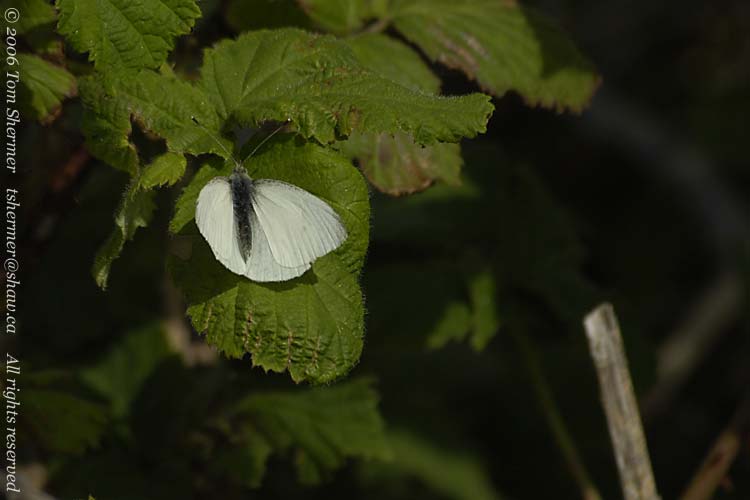 |
| I walked
around the chipping plant on the beach on the south side. A little
ways out, there were three Ring-billed Gulls. I managed to get two
of them in a photo. |
|
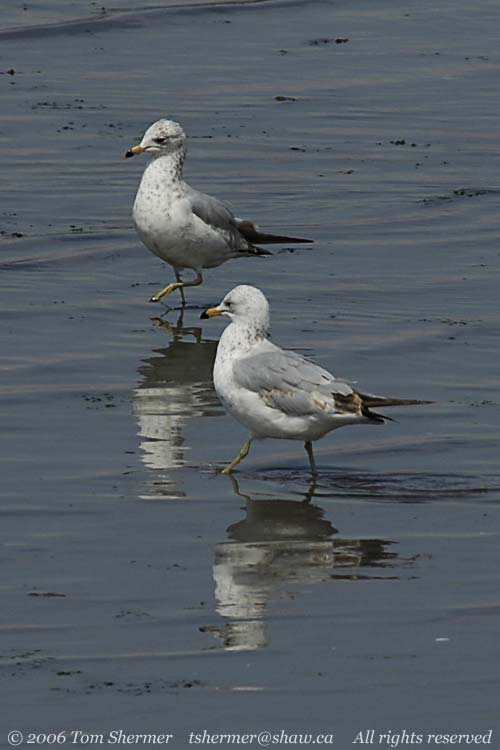 |
| Once I was
past the plant, I crossed over the jetty to the north side. From
there, I could see that there was a flock of terns hanging out around
a log boom near a marshy area across the water to the north. Every
now and then, something would excite the terns and they would all
rise up, giving their characteristic loud screeches. I watched them
for a while, and a couple of times when the flock rose, a few terns
flew away from the flock, towards me. At these times, I was able
to get some decent-sized photos. Here are two of the same bird. |
|
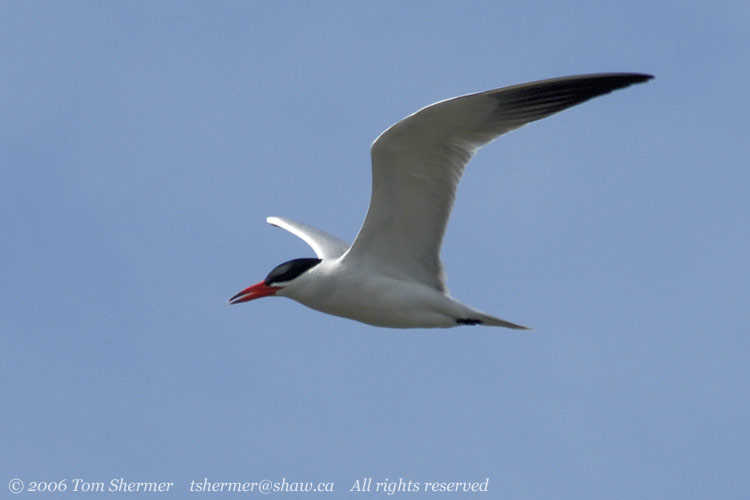 |
| |
|
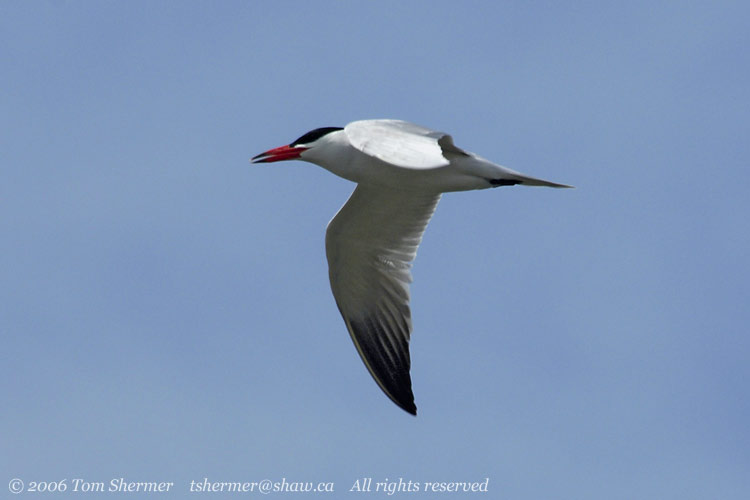 |
|
The Arctic Tern, a
much smaller bird, had been seen in the company of Caspian Terns
in this area. So while I watched the flock of Caspians, I had
been keeping an eye out for smaller birds amongst them. After
about a half an hour of this, seeing no smaller bird, I, ummm,
terned my attention to other things on the jetty.
The only birds in my
immediate area were a couple of Spotted Sandpipers. Here's one
on a nearby log.
|
|
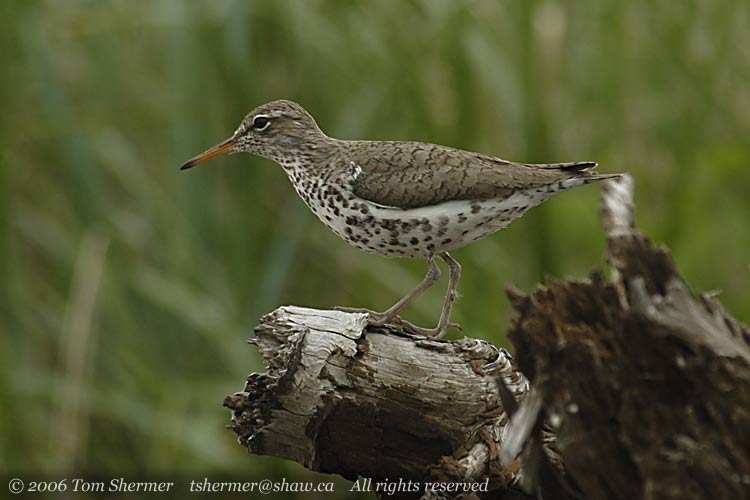 |
|
That log didn't seem
like a great place to forage, but it did afford the bird a pretty
good view of the area. Heck, I had just been standing on a log
for a while, myself, because it was a good platform and afforded
me a good view. Why shouldn't the Spotty do the same?
One of the logs near
the one I had stood on had been part of a log boom at some point,
and it still had a spike or something in it with a rope tied on.
The combination of textures interested me.
|
|
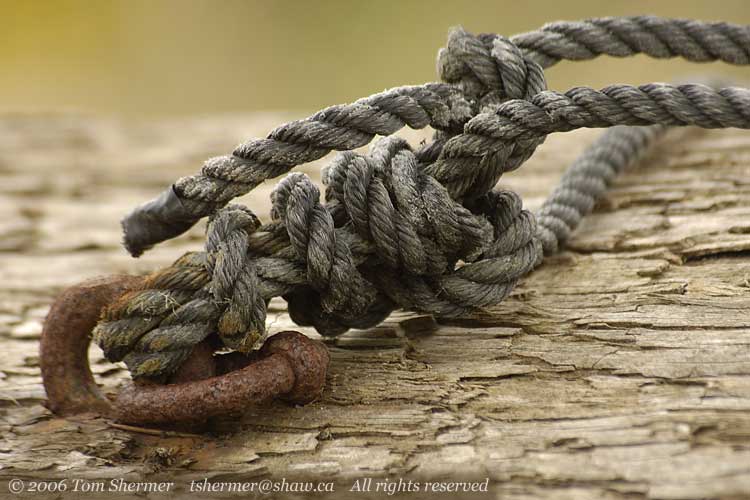 |
| After taking
a few shots of the rope on the log, I noticed that Spotty had returned
to foraging at the water's edge, and had found himself a good-sized
bug. |
|
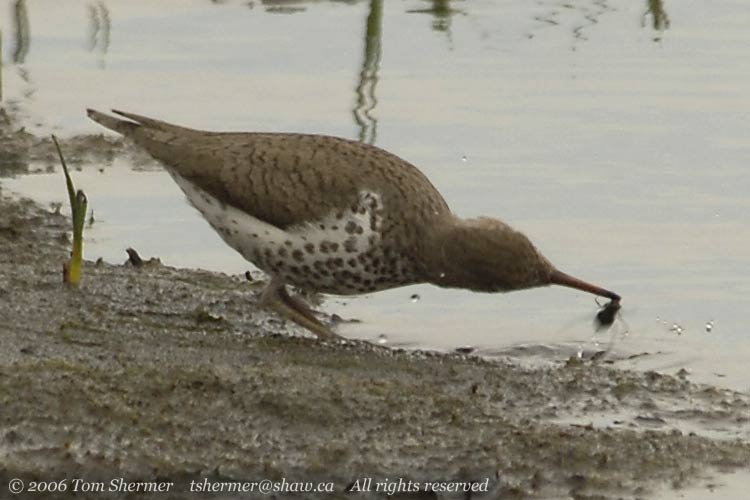 |
|
I walked a ways back
east on the jetty, on the north side, until I realized that to
continue I would have to cross into the wood-chipping plant. I
decided against that, as the people working there don't like parkgoers
in amongst their heavy machinery and wood chips. So I retraced
my steps west.
When I got to where
I had been before, a Spotted Sandpiper was up on a log. I think
that this is the same bird that I saw before, but I can't be certain.
|
|
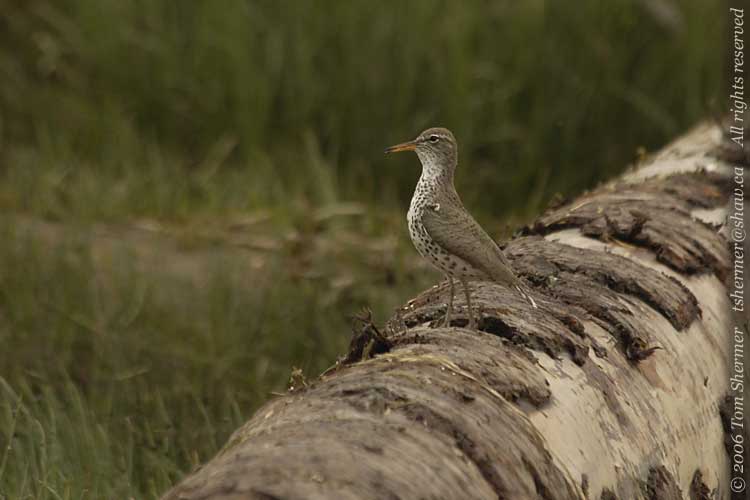 |
| It had become
overcast and some darkish clouds had moved in. Along with one of
the North Shore mountains, I thought that the clouds provided a
nice backdrop for some photos of flying Caspians, and so I took
the unusual measure of zooming out as far as possible to take some
bird shots. I never got any that were as good as what I had hoped
for; most of them ended up vaguely like this one. |
|
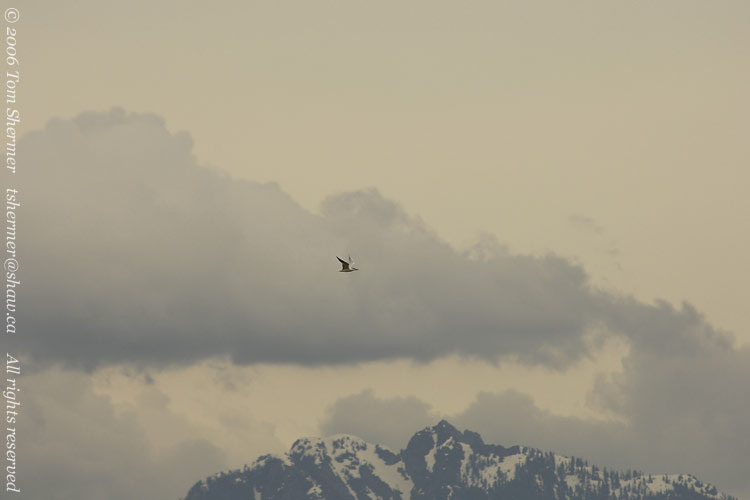 |
| In the meantime,
Spotty had decided to play king-of-the-stump. |
|
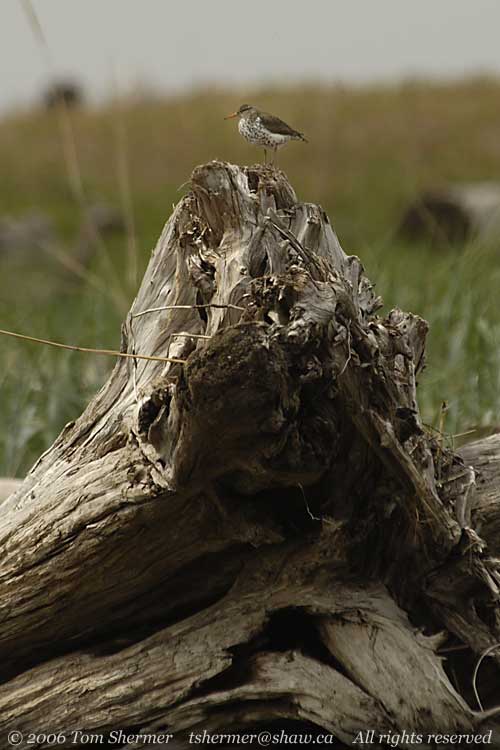 |
| As I walked
across the jetty back at the west end of the chipping plant, I saw
and heard something flying around that seemed half-bee, half-hummingbird.
It buzzed when it flew. It turned out to be a moth of some sort.
I got some decent photos of it, but I haven't been able to identify
the species. |
|
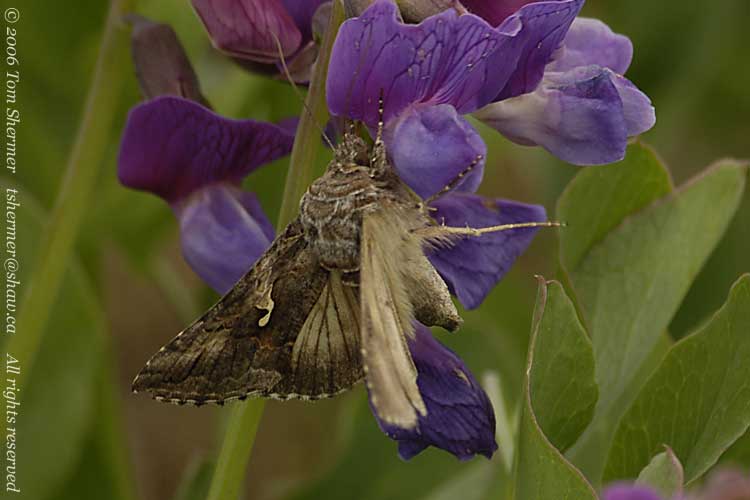 |
|
I was pretty tired
by this point, and I set off towards my car. Rather than walk
on the shifting sands of the jetty, I walked out onto the mudflats,
which were pretty solid. The tide wasn't very far out, though,
so I was fairly near the edge of the water. At one point, I saw
three little shorebirds at the edge. I watched them and took photos
for a while.
I recognized the genus
of these birds, Calidris, immediately. Their shape is distinctive.
Unfortunately, there are a number of little Calidrines that are
often hard to tell apart. My birds seemed a little larger than
the smallest Calidrines, which birders collectively call peeps,
but I wasn't 100% sure of that size estimate; so it was possible
that these were peeps.
Two of the birds were
rufous (red-brown).
|
|
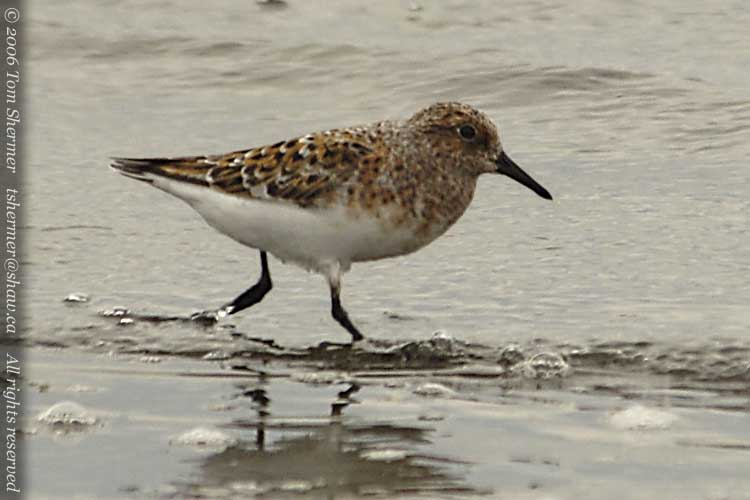 |
| |
|
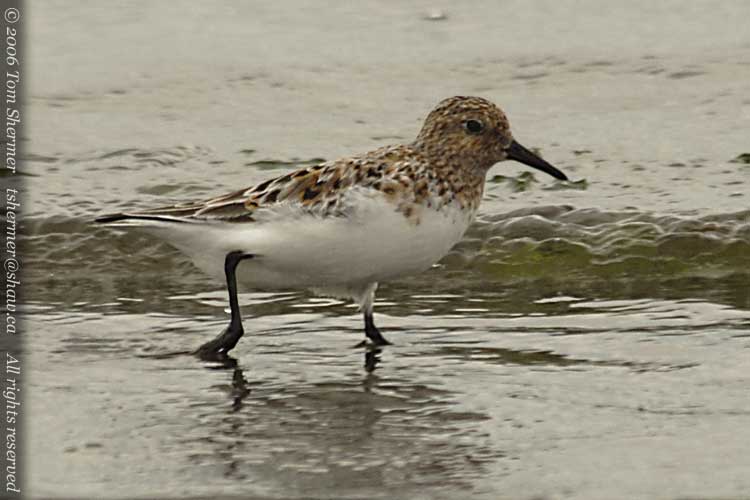 |
|
And the third was more
chocolate-brown and grey.
|
|
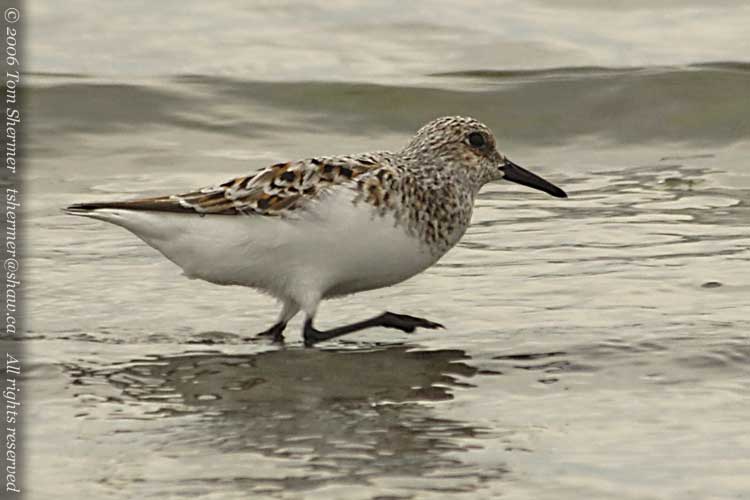 |
| They were
running along the water's edge. |
|
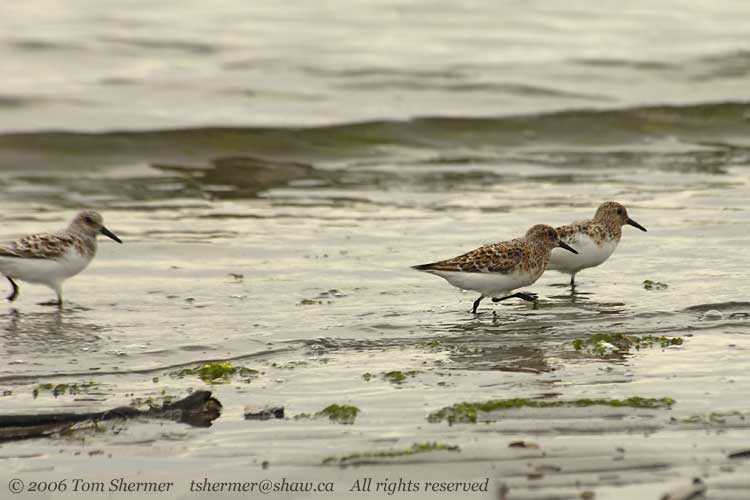 |
|
Well, I couldn't figure
out what those birds were, either in the field or once I was back
in my car with my guide book. I thought that I had two different
species, and that confused me.
I sent my photos to
my friend Ilya, though, and he set me straight. All three of these
birds were Sanderlings. Sanderlings are one of the few Calidris
sandpipers where the males and females look different. I had one
female and two males. They were in their breeding plumage. I had
only seen Sanderlings in nonbreeding plumage before, which (for
both sexes) is white with a pale grey back and wings (or darker
grey and black on the juveniles).
It was interesting
to have encountered a bird that I thought I knew, looking totally
different than my conception of them. I'm always learning something,
I guess.
As I walked along,
I went by a Northwestern Crow who was making a rattly call rather
than the stereotypical cawing. And he was digging in the
mud while he did it. It seemed quite different than the crow behaviour
that I normally observe, and I wondered (but never found out)
what it was all about.
|
|
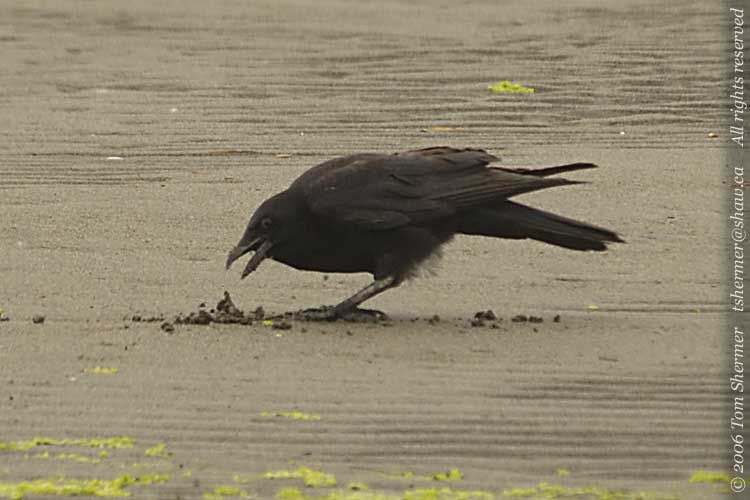 |
| As I kept
going, I happened upon what seemed to be an out-of-place object. |
|
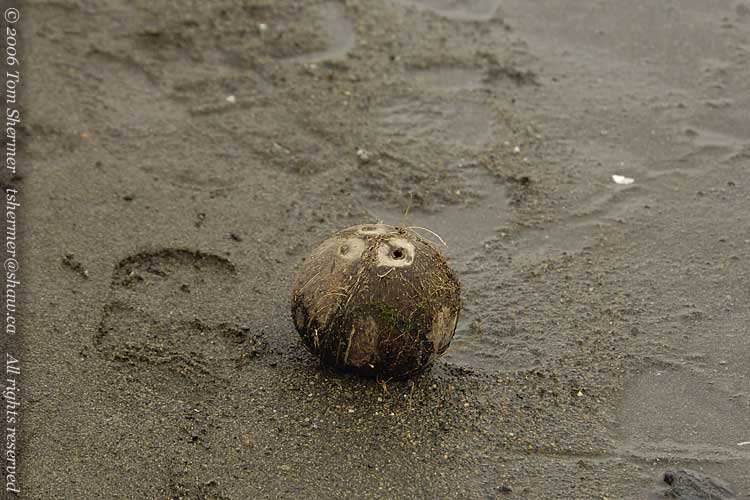 |
|
I wondered about how
it got there; after all, coconuts are tropical, I was in a temperate
zone, and coconuts aren't migratory. Maybe swallows had
carried it there.
I pondered for a while,
and then headed on, thinking about the airspeed velocity of unladen
swallows. I guess it's pretty hard to get birds off my mind.
I jumped over a few
little streams in the mud where the tide was still going out,
heading straight across the flat towards the parking lot. The
only notable bird I encountered on the way was a Killdeer who
was cooling his toes in the water.
|
|
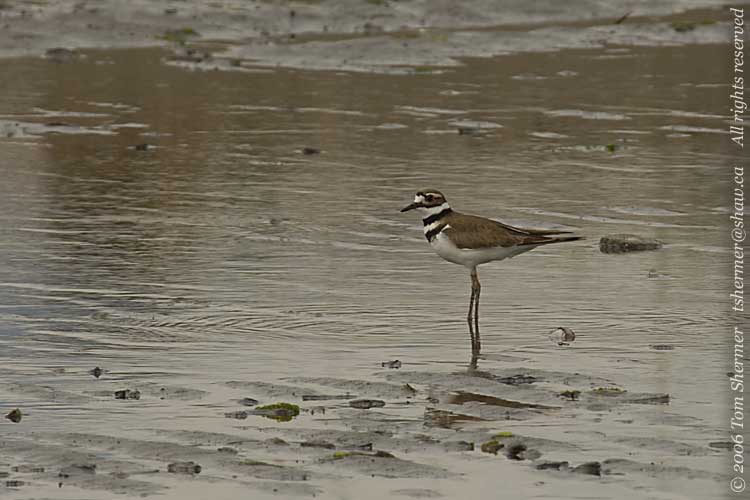 |
| Once I got
back home, I checked in on the ducklings again, who were doing fine.
I'll leave you with one of them. |
|
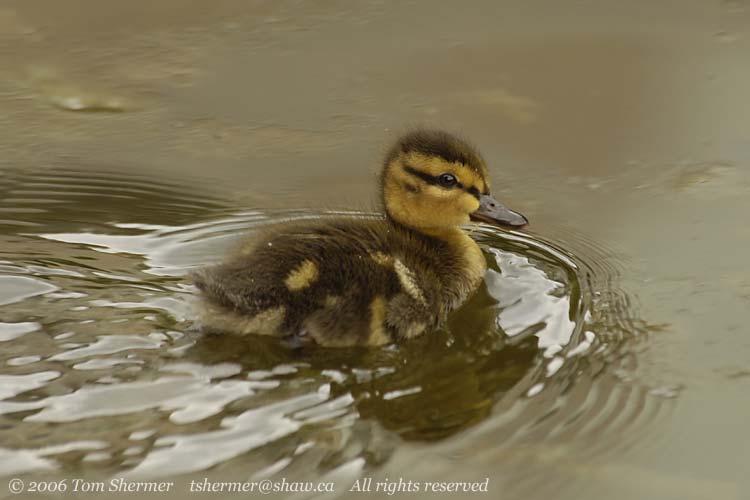 |
Missing
my tern,
Tom |
|
|